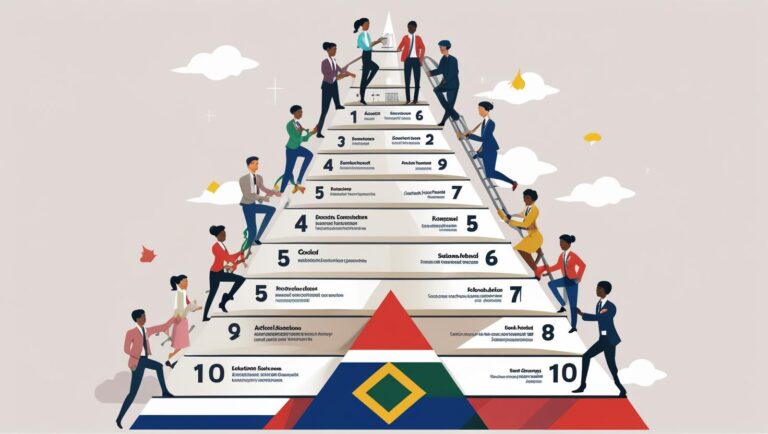EE and Workforce Planning in Demographically Diverse Provinces
Introduction
Employment Equity (EE) in South Africa is more than a legal requirement—it’s a strategic tool for building fair, inclusive, and high-performing workplaces. Yet, while EE legislation is set nationally, its implementation happens locally, which introduces a challenge many organisations struggle to navigate.
National targets often don’t align neatly with the unique demographic realities of provinces like the Western Cape or KwaZulu-Natal. Applying these targets blindly can result in token compliance, community pushback, or hiring practices that feel forced rather than transformative. For HR professionals, the real question becomes: how can workforce planning balance legal compliance, genuine transformation, and local legitimacy?
In this article, we explore how small and medium enterprises (SMEs) and larger organisations can implement EE in demographically diverse regions while maintaining organisational performance, community trust, and long-term talent pipelines.
Understanding the Provincial Gap
The challenge starts with demographics. National EE targets are based on broad statistics across South Africa. However, the population composition varies significantly from one province or metro to another, which can make strict adherence impractical or even counterproductive.
Take the Western Cape, for example. Here, Coloured South Africans make up the majority of the population. National EE targets, however, emphasise increasing African representation in the workforce. Strictly enforcing these targets can create tension between meeting legal obligations and reflecting the local community, particularly in frontline and administrative roles.
Meanwhile, in eThekwini Municipality (Durban), Indian South Africans are significantly overrepresented compared to national averages. Organisations that maintain a workforce reflecting this reality can technically appear non-compliant, despite hiring practices that mirror the local talent pool. Without nuance, compliance can feel disconnected from reality.
These examples highlight a fundamental truth: national EE targets are guides, not one-size-fits-all prescriptions. Workforce planning that ignores local context risks alienating communities and undermining trust in EE initiatives.
Why This Matters for Workforce Planning
Workforce planning is about more than just ticking boxes for compliance. Blind adherence to national EE targets can have unintended consequences:
Hiring or promotion quotas that don’t reflect local talent availability.
Alienating local communities who feel misrepresented.
Weakening trust in EE as a fairness mechanism.
Reducing organisational performance by prioritising targets over the right fit.
Employment equity is most effective when it focuses on structural transformation, community upliftment, and sustainable talent pipelines, rather than simply “fixing numbers.”
A Smarter Approach: Localised Equity Planning
Creating meaningful EE strategies in demographically diverse provinces requires thoughtful adaptation. Here’s how HR leaders can approach this challenge.
Use Provincial Data, Not Just National Benchmarks
National EE targets provide a broad framework, but local data is essential for relevant planning. Companies should track provincial Economically Active Population (EAP) breakdowns, municipal data for urban centres, and the composition of their applicant pools.
For instance, in the Western Cape, hiring 60% Coloured candidates for entry-level positions might reflect genuine inclusivity, even if national targets suggest a heavier focus on African representation. By aligning with the local population and applicant availability, companies achieve legitimacy while staying compliant through contextual reporting.
Segment by Role and Seniority
Not all roles carry equal weight in equity planning. Senior and management positions often have scarce talent pools and require targeted development, while entry-level roles are ideal for community upliftment.
For example, middle and senior managers might benefit from leadership development programs aimed at historically underrepresented groups. Entry-level hires can be sourced locally, combined with mentorship or learnership programs to build future pipelines.
EE isn’t about patching numbers—it’s about creating pathways for growth and sustained inclusion. Companies that focus on progression and skill development rather than compliance quotas are more likely to achieve meaningful transformation.
Partner Locally
Your workforce should reflect your ecosystem, not distant averages. Partnerships with local educational institutions, community organisations, and municipal offices can help identify talent, co-fund development programs, and provide real opportunities for local youth.
A practical example comes from Durban, where a company partnered with a local university to fund bursaries for African engineering students. These students were then placed into internship programs, eventually progressing into leadership roles. By doing so, the company ensured long-term equity impact without compromising current workforce expertise.
Collaborating with unions and community-based organisations ensures that EE strategies don’t feel like “parachute employment”—bringing staff from other provinces purely to meet numerical targets—but rather foster genuine community development.
Case Study: A Durban-Based Engineering Firm
An engineering firm in eThekwini faced penalties for perceived “lack of African representation” in senior engineering roles. The reality was that the local talent pool was predominantly Indian-qualified professionals.
Instead of ignoring EE, the firm:
Partnered with a local university to fund African engineering bursaries.
Developed an internship-to-leadership pathway for graduates.
Included this initiative in their EE report with measurable milestones.
The result? The company achieved credible transformation, built a future talent pipeline, and avoided alienating its existing high-performing workforce.
The Role of Talent Acquisition and Retention
EE is not achieved by hiring alone. Workforce planning must consider attraction, inclusion, and retention strategies tailored to the provincial context.
Attraction: Use local channels such as community radio, SETAs, and universities. Job adverts should reflect local languages and cultural contexts. Bursaries or learnerships tied to local employment guarantees ensure alignment with community needs.
Inclusion: Onboarding programs can include cultural awareness sessions. Mentorship programs and employee resource groups help integrate employees and build engagement.
Retention: Track exit interviews by demographic and location. Adjust workplace policies, benefits, and leadership styles to accommodate local cultural needs. Reward managers for inclusive team development, not just output.
By combining these strategies, organisations create an environment where EE is practical, sustainable, and respected rather than superficial.
Building Learning Pathways With Equity in Mind
Transformational EE requires structured development aligned with the National Qualifications Framework (NQF). Each career level should have tailored development plans to build capability while meeting equity goals.
For example:
Entry-level admin (NQF 4): Local hires undergo matric bridging programs and basic computer skills training.
Supervisor (NQF 5): Coloured or Black candidates benefit from learnership programs combined with mentorship.
Mid-manager (NQF 6–7): African or Indian staff engage in project leadership and diploma funding initiatives.
Senior manager (NQF 8): Underrepresented groups access postgraduate sponsorships and policy coaching.
Executive (NQF 9+): Diverse shortlists undergo succession planning and board exposure.
Structured, level-based pathways ensure EE transformation is embedded, measurable, and tied to tangible career progression rather than arbitrary targets.
Rethinking KPIs for Meaningful EE
Traditional EE reporting often focuses solely on representation percentages. While important, this approach misses the structural realities of workforce diversity. Consider tracking:
Applicant sources by demographic to identify outreach gaps.
Average promotion timelines by equity group.
Training and development investment per EE category.
Exit rates by race and role band.
Local vs national hire ratios to assess community alignment.
KPIs that capture mobility, investment, and inclusion tell a richer story than static numbers. They allow management to evaluate whether equity initiatives build capability and trust, not just compliance.
Avoiding Common Pitfalls
Many organisations stumble in EE implementation. Common missteps include:
Using headhunting to “fix” numbers while ignoring internal development opportunities.
Applying blanket quotas across departments with different talent realities.
Blaming national targets without reporting local context. Narrative reports are critical.
Excluding dominant local groups to meet national targets, which undermines legitimacy.
Instead, shift the focus to “what does equitable representation with community legitimacy look like in this context?” This reframes EE from a compliance exercise into a strategic, ethical, and socially responsible initiative.
Conclusion
Employment Equity is not merely a legal obligation; it’s a mechanism for justice, community trust, and sustainable organisational growth. In provinces like the Western Cape or Durban, EE strategies must respect local demographics, leverage local talent, and provide structured development opportunities.
Rigid application of national targets can backfire, but thoughtful, data-driven workforce planning creates genuine transformation. By combining localised hiring, mentorship, partnerships, and level-based development, organisations can meet EE obligations while building talent pipelines that last.
If your EE strategy looks good on paper but struggles in practice, it’s time to rethink your approach. Local context, community relevance, and structured transformation should be at the heart of every workforce plan.



